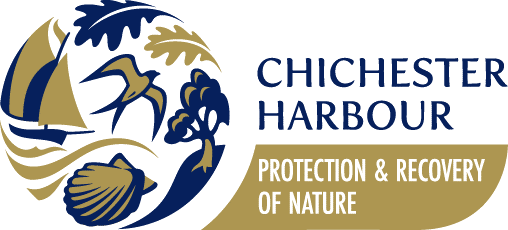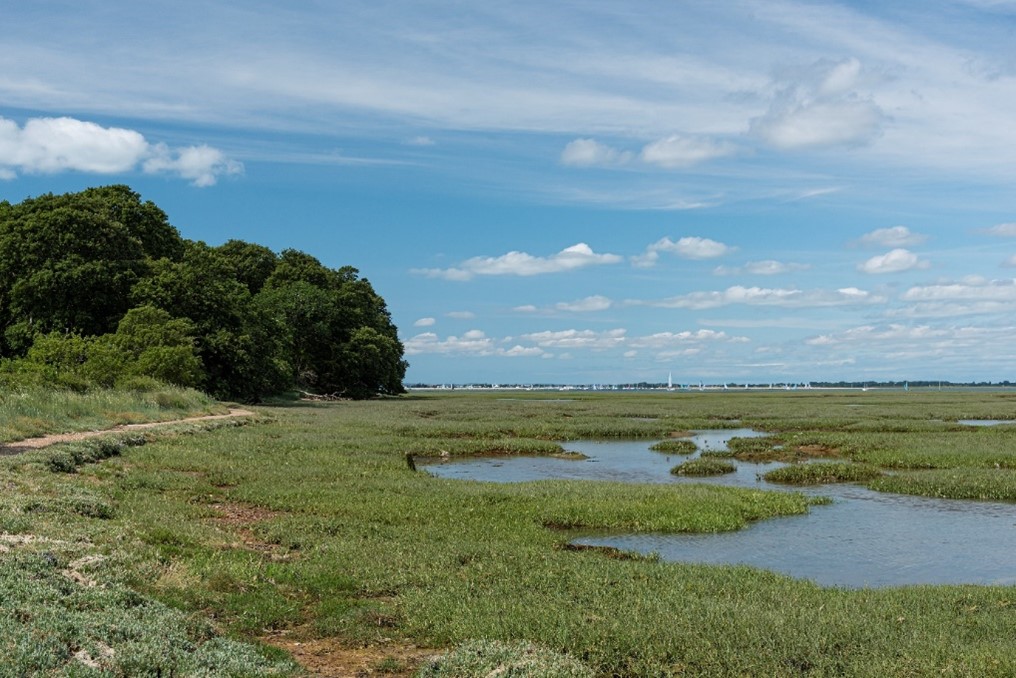The unique mixture of habitats in Chichester Harbour make it an important local, national, and international resource for nature conservation. The coastal plain encompasses a diverse suite of marine, intertidal and lowland habitats. Some of the important habitats in Chichester Harbour are saltmarsh, sand dunes, reedbeds, grassland, woodland, mudflats, shoreline, saltwater and freshwater.
Our aim is to ensure that the richness of the Harbour’s natural habitats will continue to be conserved, restored and enhanced so wildlife can thrive and ecological systems remain healthy and valued. Our Management Plan explains more about our intentions and focus.
Protecting and enhancing habitats are two of the three key aims of the CHaPRoN (Chichester Harbour Protection and Recovery of Nature) partnership initiative led by the Conservancy.

Saltwater and freshwater
The saltwater and freshwater habitats of the Harbour are a priority for nature conservation given they are heavily influenced by erosion, sedimentation and water flows. They are strongly influenced by topography, the chemical composition of the water, and the soils and land-use found in the surrounding catchment. They provide a wide range of specialized micro-habitats, and support many types of aquatic plants and animals.
Mudflats
The adjacent mudflats are sedimentary intertidal habitats consisting of silts and clays with a high organic content. Mudflats are highly productive areas which, together with other intertidal habitats, support large numbers of predatory birds and fish.
They provide feeding and resting areas for internationally important populations of migrant and wintering waterfowl, and are also valuable nursery areas for fish.
Saltmarsh
Chichester Harbour has one of the largest areas of saltmarsh in the UK. It is found on the upper part of the mud, which the water reaches only when the tide is high. It is covered in plants that can cope with salt and with regularly being underwater.
Saltmarshes start life as mudflats and through a process called ‘succession’ the habitat naturally changes. Each saltmarsh provides tidal nursery areas for fish, food for waders and wildfowl and nesting sites for waders and seabirds. Many of the plants growing on saltmarsh are not found anywhere else, making it an internationally important habitat.

Shoreline
The shoreline of Chichester Harbour includes shingle beaches leading up to the strandline, the area at the top of the beach where the high tide deposits material from the sea. This is made-up from natural debris, mainly seaweeds, and other flotsam and jetsam caught by tidal currents and washed-up onto the shore. The strandline supports a whole variety of creatures, especially invertebrates. These small animals provide an important source of food for larger birds and mammals. The strandline can help with the development of sand dunes.
Sand dunes
Sand dunes are another very fragile, but important, coastal habitat. Several birds like to nest in the dunes, including skylarks, meadow pipets and stonechats, with ringed plovers and oystercatchers nearby. The dunes are also home to a selection of invertebrates.
Reedbeds
The reed beds at Chichester Marina, Fishbourne Meadows, Emsworth and Thorney Island can grow over two metres high and are very important for bird life and mammals, such as the iconic water vole. Water trickling through reed beds is cleaned by microorganisms living on the root system. This natural process helps with water purification by breaking down the
pollutants in the water.
Grassland
The pastures of Fishbourne Meadows are an important habitat, managed through grazing. The area has never been ploughed so it has a wide range of plant and insect species. Freshwater streams flow through the meadow keeping the area moist. In places, it is bordered by areas of woodland. Although there is limited cover of grassland in Chichester Harbour, one place it is found is at West Chidham where there are long term plans to enable the creation of new saltmarsh habitat. Chichester Harbour has been farmed for hundreds of years for the production of crops and to raise livestock. During this time, wildlife has moved into the farmed landscape to make the most of the riches it offers, from flower-filled field margins to bushy hedgerows, reed-lined ponds to seed-filled stubbles. The network of ditches, used for drainage purposes, provide essential wildlife corridors between habitats.
Woodland
Woodlands are the most diverse of all the habitats found in Chichester Harbour. One single oak tree can support 350 different species of insect and have over 30 different lichen species on its bark (Forestry Commission, 2009). Wildlife also seeks food and shelter in the crevices of the bark, the canopy of fresh leaves, the hollow trunks of old trees, leaf litter and branches of dead wood and rotting wood on the woodland floor. Furthermore, woodlands remove harmful pollution and carbon dioxide from the atmosphere. The two largest woodlands in Chichester Harbour, at Old Park Wood and Tournerbury, are both private estates. Other small copses found around the Harbour are collectively important to the natural landscape.